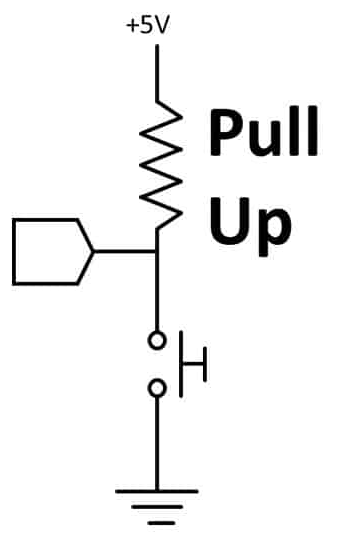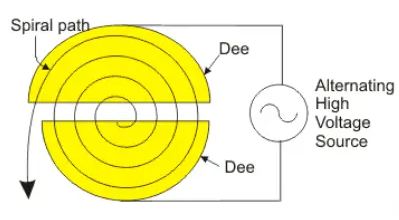Pull Up Resistor: What is it?
What is a Pull-up Resistor?
A pull-up resistor is used in electronic logic circuits to ensure a known state for a signal. It is usually used in combination with transistors and switches to ensure the voltage between ground and Vcc is actively controlled when the switch is open (similar to a pull-down resistor).
It is not a special kind of resistor, it is a normally fixed value resistor connected between a supply voltage and input pin.
This can sound confusing at first, so let’s go into an example.
Digital circuits only understand high (1) or low (0) states.
Consider a digital circuit operating on 5V. If the available voltage at an input pin is between 2 to 5 V, the input state is high. And if the available voltage at an input pin is between 0.8 to 0 V, the input state is low.
But, due to any reason, if the available voltage at an input pin is between 0.9 to 1.9 V, the circuit will confuse to select a high or low logic state.
To avoid this floating condition, pull-up and pull-down resistors are used.
How Does a Pull-up Resistor Work?
A resistor is connected between a supply voltage and an input pin. The circuit diagram of this arrangement is shown in the figure below.

The gate input voltage is pulled up to the level of input voltage when the mechanical switch is OFF. And the input voltage is directly going to the ground when the mechanical switch is ON.
A pull-up resistor is connected with a switch to ensure the voltage level. The switch controls the input state of the circuit.
Instead of a mechanical switch, a power electronics switch is also used in the circuit.
The pull-up resistor is also used to avoid short circuits because the pin cannot directly be connected with ground or supply. If the pull-up resistor is not connected, it may result in short-circuit or damage to other components of circuits.
Pull-up vs. Pull-Down Resistor
The difference between pull-down and pull-up resistors is as shown in the table below.
| Pull-up Resistor | Pull-down Resistor | |
| Input Stability | It is used to ensure an input terminal is stable at a high level. | It is used to ensure an input terminal is stable at a low level. |
| Connection | One terminal is connected with VCC. | One terminal is connected with the ground. |
| When a switch is open | Current path is VCC to an input pin. Voltage at input pin is high. | Current path is input to ground, and voltage at an input pin is Low. |
| When a switch is close | Current path is VCC to input pin to ground. Voltage at input pin is low. | Current path is VCC to an input pin. Voltage at input pin is high. |
| Used | More commonly used | Rarely used |
| Formula |
How to Calculate Pull Up Resistor
Ohm’s law calculates the value of a pull-up resistor. The formula of a pull-up resistor is as shown below equation.
Vsupply = supply voltage
VHmin = minimum voltage required for high (1) state
Isink = minimum current sink by the input pin
Applications of Pull-up Resistors
Pull-up resistors are more used than pull-down resistors. The application of pull-up resistors is as listed below.
Pull-up resistors are used as interfacing devices between a switch and a digital circuit.
It is used in the I2C protocol bus to enable a single pin to act as input or output.
In resistive sensors, it is used to control current flow before analog to digital conversion.
Source: Electrical4u.
Statement: Respect the original, good articles worth sharing, if there is infringement please contact delete.
Electrical4U is dedicated to the teaching and sharing of all things related to electrical and electronics engineering.










